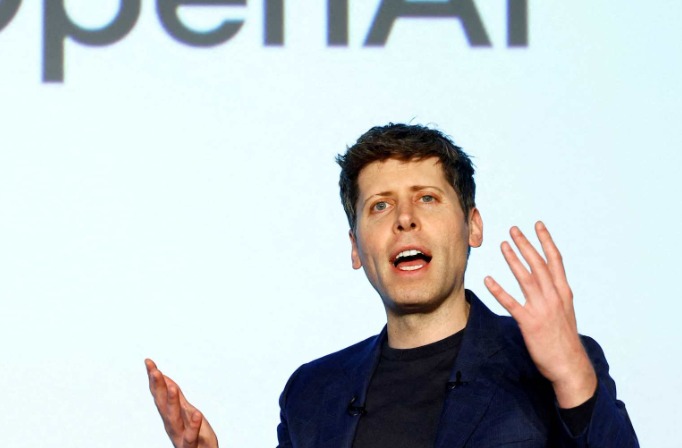OpenAI Restructures as Public Benefit Corporation
OpenAI restructures into a public benefit corporation, raising questions about its "too big to fail" status in the AI sector.

OpenAI Restructures as Public Benefit Corporation
OpenAI, the creator of ChatGPT, has recently undergone a significant corporate restructuring, raising questions about whether it has become "too big to fail" in the rapidly evolving artificial intelligence (AI) sector. Announced on October 28, 2025, this restructuring transforms OpenAI's for-profit arm into a public benefit corporation (PBC) called OpenAI Group PBC, while the original nonprofit has been renamed the OpenAI Foundation. This move, approved by the attorneys general of California and Delaware, establishes a new governance and ownership structure designed to balance mission-driven goals with the need for capital and operational scale.
Background: The Evolution of OpenAI’s Structure
OpenAI was founded in 2015 as a nonprofit organization with the mission to ensure that artificial general intelligence (AGI) benefits all of humanity. In 2019, to scale its research and deployment efforts, OpenAI created a for-profit subsidiary. However, this subsidiary remained controlled by the nonprofit parent to keep the organization's mission central to its operations.
The 2025 restructuring marks a pivotal shift. The for-profit subsidiary is now a public benefit corporation—a legal form that requires the company to consider social and environmental impact alongside profits. The nonprofit OpenAI Foundation holds a 26% equity stake in this PBC, Microsoft owns 27%, and the remaining 47% belongs to employees and other investors.
Key Features of the New Structure
-
Mission-aligned governance: The OpenAI Foundation appoints all members of the OpenAI Group PBC board of directors and can remove them at any time. Some board members serve on both the nonprofit and for-profit boards, ensuring alignment on the mission to benefit humanity.
-
Capital raising and market readiness: Transitioning to a PBC enables OpenAI to raise capital more efficiently, including potentially launching an initial public offering (IPO). This access to funding is critical to support the extensive resources required for AGI development.
-
Financial scale and philanthropic impact: The nonprofit foundation now owns conventional equity valued at approximately $130 billion, making it one of the best-resourced philanthropic organizations globally. The more OpenAI succeeds as a company, the more the nonprofit’s equity stake appreciates, which will fund philanthropic work, including health research and AI resilience.
-
Focused philanthropic commitments: The OpenAI Foundation has pledged $25 billion toward accelerating health breakthroughs and funding technical solutions for AI resilience, ensuring that AI's risks are minimized while maximizing its societal benefits.
Implications: Is OpenAI Too Big to Fail?
The phrase "too big to fail" typically refers to organizations so large and systemically important that their failure would have catastrophic economic or societal consequences. OpenAI’s restructuring and valuation raise questions about whether it now fits this category in the AI domain.
-
Scale and Influence: With a multibillion-dollar valuation and significant backing from Microsoft and investors, OpenAI wields enormous influence over the development and deployment of AI technologies, particularly generative AI like ChatGPT. Its dominance in the market and technology leadership could mean disruptions if it faces failure or severe setbacks.
-
Governance and Accountability Concerns: Critics, including some former employees, have raised concerns that the complex corporate structure could reduce governance safeguards and mission accountability, potentially prioritizing growth and profit over ethical considerations. A legal letter titled "Not For Private Gain" urged regulators to intervene, arguing that nonprofit control is essential to maintain OpenAI’s original mission.
-
Regulatory and Legal Oversight: The restructuring process involved the approval of state attorneys general, underscoring the regulatory scrutiny on OpenAI’s balance between social mission and commercial success. The public benefit corporation model is designed to legally embed the company’s mission, but its effectiveness remains to be seen.
-
Market and Technological Impact: As OpenAI scales, it faces pressures similar to other tech giants—balancing innovation, market competition, ethical AI deployment, and public trust. The company’s direction will likely influence global AI governance standards and shape the future trajectory of AI technology.
Context and Outlook
OpenAI’s recapitalization also reflects broader trends in AI commercialization, where companies must reconcile rapid growth and investor expectations with ethical stewardship of transformative technologies. The OpenAI Foundation’s commitment to funding health innovation and AI safety signals a proactive approach to social responsibility.
Microsoft’s 27% stake further integrates OpenAI into the broader tech ecosystem, potentially accelerating AI adoption across industries but also concentrating market power. Employee and investor ownership of 47% aligns incentives for talent retention amid fierce competition in AI development.
While the new structure provides OpenAI with robust financial and governance mechanisms, its "too big to fail" status is still emerging and depends on how well it manages risks, maintains mission focus, and navigates regulatory landscapes.



